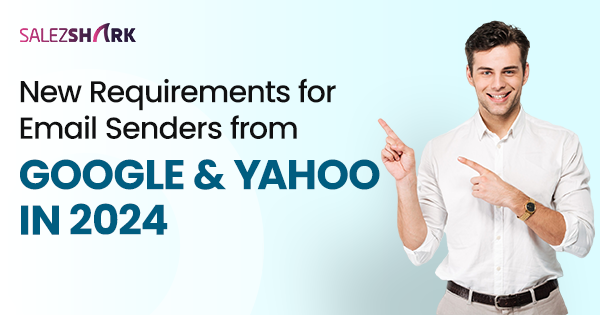Are you an email sender who relies on Google or Yahoo to reach your audience? If so, there are some new rules in town that you need to know about. Google and Yahoo are also tightening their requirements for email senders starting in 2024, and it’s important to stay ahead of these changes to ensure your emails keep landing in your recipients’ inboxes. Let’s dive into what’s changing and also how you can prepare.
Why Are There New Requirements?
Google and Yahoo are implementing these changes to enhance email security and also reduce spam. With an ever-increasing number of phishing attacks and spam emails, it’s crucial for these email giants to protect their users. By enforcing stricter authentication measures and also ensuring that senders adhere to best practices, they aim to create a safer email environment for everyone.
What Are the New Requirements?
Here are the key new requirements from Google and Yahoo for email senders in 2024:
Email Authentication
Properly authenticating your emails is no longer optional. You’ll need to use DKIM, SPF, and DMARC to prove that your emails are legitimate and haven’t been tampered with in transit.
Spam Complaint Rate
Keep your spam complaint rate under 0.3%. If too many people mark your emails as spam, your sender’s reputation will suffer, making it harder for your emails to reach the inbox.
Unsubscribe Links
Make it easy for recipients to unsubscribe with just one click. You must honor unsubscribe requests within two days.
RFC 5322 Compliance and PTR Records
Ensure your emails comply with the technical specifications outlined in RFC 5322. Additionally, make sure your sending server IP addresses have valid reverse DNS (rDNS) records.
TLS Encryption
Use TLS encryption to secure your emails in transit. This helps protect the content of your emails from being intercepted by malicious actors.
Why These Changes Matter for All Email Senders
While these requirements primarily target large bulk senders, they are crucial for everyone who sends emails. If you send even a small volume of emails, adhering to these practices will improve your email deliverability and protect your sender reputation.
Steps to Ensure Compliance
Here are five steps you can take to ensure you comply with the new requirements and keep your emails reaching the inbox:
Understand Your Current Email Domains and Authentication Status
Take stock of the domains you use for sending emails and whether they are already authenticated and this is the first step in ensuring compliance.
Set Up Custom DKIM
DKIM (DomainKeys Identified Mail) is an email authentication method that adds a digital signature to your emails. This helps verify that the emails were indeed sent by you and haven’t been altered.
Implement Custom SPF
SPF (Sender Policy Framework) is another email authentication method that specifies which IP addresses are allowed to send emails on behalf of your domain. Setting up a custom SPF record also helps protect your domain from being used for spam or phishing.
Configure DMARC
DMARC (Domain-based Message Authentication, Reporting, and Conformance) builds on DKIM and SPF to provide a way for domain owners to monitor and also control how their emails are handled by recipients. Setting up DMARC helps ensure that only legitimate emails are delivered to recipients.
Also Read– Steps To Grow Your Relationships with Your Email Subscribers
Register with Google Postmaster Tools
Google Postmaster Tools provides insights into your email performance because it includes spam rates and sender reputation. Registering your domain with these tools allows you to monitor your email deliverability and also take action if necessary.
Conclusion
Staying ahead of these new requirements from Google and Yahoo is crucial for maintaining your email deliverability in 2024 and beyond. By following the steps outlined above, you can ensure that your emails continue to reach your audience and that your sender’s reputation remains strong. Remember, email security and best practices are not just for large senders; they benefit everyone in the email ecosystem.
Frequently Asked Questions (FAQs)
Q: What happens if I don’t meet these requirements?
A: If you don’t comply then your emails might be rejected or delivered to recipients’ spam folders.
Q: When do these changes take effect?
A: The changes will start rolling out gradually from February 2024.
Q: Do these requirements apply to all email senders?
A: While the primary focus is on bulk senders, all email senders should follow these best practices to ensure deliverability and protect their reputation.
By understanding and implementing these new requirements, you can stay ahead of the curve and ensure that your emails continue to be delivered to your recipients’ inboxes.

